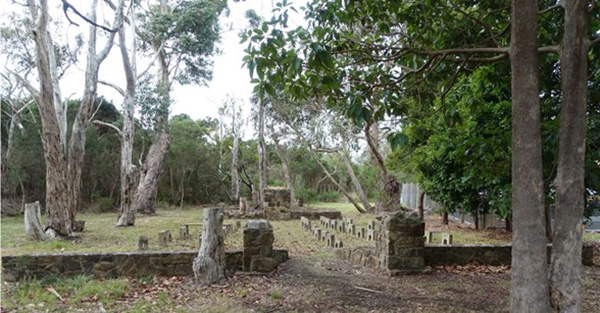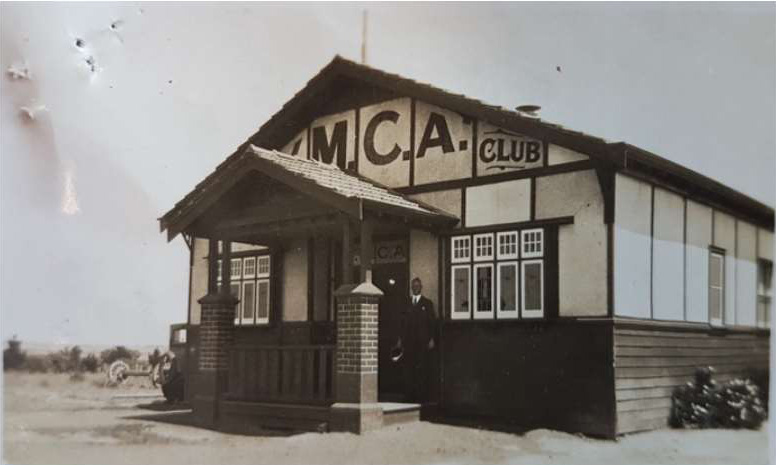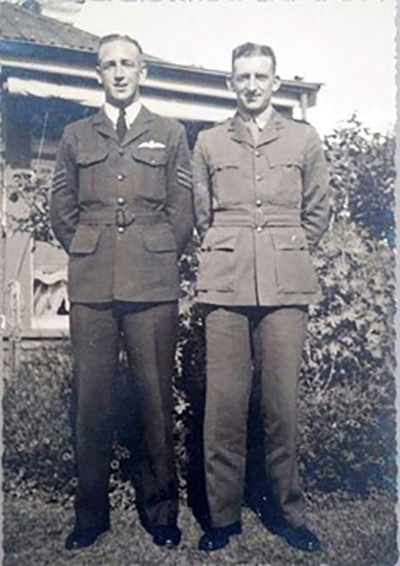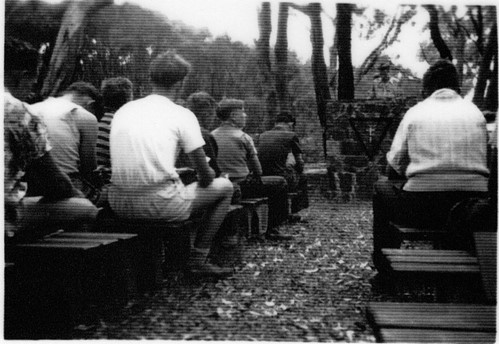
By Peter McCullough
Bordering the Buxton Woodland Reserve in Shoreham, at the rear of the former YMCA (Young Men’s Christian Association) property, Camp Buxton, rests the remains of a small stone, outdoor open-air chapel, which has had a far-reaching influence belying its size. Neglected for many years, a full restoration of the chapel is now the focus of a community group and the Mornington Peninsula Shire.
The Evolution of Camp Buxton
In the first half of the twentieth century a number of children’s camps were established on the Mornington Peninsula; they were often linked with charitable or state institutions which combined concerns for the physical fitness and moral education of young people, in particular disadvantaged or urban youth.
In 1925 Walter Henry Buxton purchased 148 acres of land for his subdivisional project ‘Shoreham-on-the-Sea’ and offered two acres to the YMCA which was looking for a suitable camp site in the area. The first camp was held at Christmas 1925 and the area was a hive of activity at weekends and over the subsequent Easter break as working parties became involved.
Volunteers cleared the block, dug drains, latrines and a refuse pit as the first steps to permanent occupation. In 1928 contractors relocated a hall and a three-room cottage, purchased for a thousand pounds from Flinders Naval Base. December of that year saw the first official summer camp using these two buildings and a kitchen block. Campers, however, still slept in communal tents.

The Inter-War Years
Volunteer labour continued during the 1930’s with a continual improvement of facilities: the Recreation Reserve was cleared as a sports ground in 1934, a brick hospital was constructed the following year, and in 1937 a bunkhouse for camp leaders and a shower block were built. Timber floors and frames were also constructed for tents that housed campers.
In the 1930’s there were four of five camp sessions in December and January. Of these, one was organised for underprivileged boys. Activities included swimming and life saving lessons, beach games, overnight hikes, picnics, and basketball, as well as regular devotions and discussions.
Over the Camp’s first two decades further land was donated by, and in part purchased, from Walter Buxton and his descendants so that by 1950 Camp Buxton had grown from its original two acres to 25 acres, including the playing fields and surrounding bushland.

The Chapel
Camp Buxton was used by the military during the war years. Then, with summer camps resuming, plans were made in 1945 for an upgrading of the water supply, new bunkhouses, and a memorial open-air chapel. Built of local Moorooduc stone by volunteer labour, and now lying substantially on Shire Council land, the chapel is a ‘living war memorial’ in the midst of nature, and is listed on the Victorian War Heritage Inventory.
The chapel itself is dedicated to the memory of Cyril Young who had expressed the desire for ‘a place to worship outdoors’; the pulpit is dedicated to his younger brother, Ivan. The brothers had been youthful YMCA campers and later leaders; Cyril had been Chairman of the Camp Buxton Committee in 1938. Both were killed while serving in World War Two. Ivan, a member of the famous RAAF 450 squadron, was shot down flying his Kittyhawk at El Alamein in 1942; he was 21. Cyril, a captain in the army, died in 1945 as a POW in the infamous Sandakan camp in North Borneo; he was 27.

In December, 1951, an International Older Boys’ Camp was held at Camp Buxton. Boys of diverse faiths and traditions from across the Asia/Pacific, including Japan, attended the camp and were present at the chapel dedication ceremony on 22 December, 1951. It was a very grand affair, attended by the Governor of Victoria, Sir Dallas Brookes, together with Harold Holt, then Minister of Immigration and Minister for Labour and National Service, and also the Lord Mayor of Melbourne, Cr. O.J.Nilson. The Prime Minister, then Mr. R.G.Menzies, sent a warm message of greetings and good wishes for the camp’s success.
Thousands of boys experienced services in the chapel under the canopy of stars and columns of eucalypts in a ‘cathedral-like’, torch-lit atmosphere including TAPS (Meditative Thought and Prayer Sessions). For many of the boys the camp service was their first experience of the sacredness of the natural environment, as the chapel was in a grove of swamp gums adjacent to a wetland, alive with fauna, mammals, bird and insect life. The YMCA’s triangular logo symbolised its commitment to promoting a balance between body, mind and spirit within the youth who passed through its programs.
Post YMCA
In 1970 the YMCA decided to close Camp Buxton and the final camp was held in December, 1970-January, 1971. The facilities were leased to private operators for the next decade before they were sold into private ownership. It remained in operation as a school and youth camp and during these years many young people, both boys and girls, experienced the bushland setting alongside the beautiful beaches of Shoreham and Point Leo. It then became a family camp, open to the general public, until 2002, but on a reduced site.

The overall camp site was re-subdivided in the early 1990’s; this created four residential blocks which encompassed the main residential area as well as the southern part of the chapel site. A few scattered bunkhouses were converted for private use and the recreation hall became a private dwelling. The mobilisation of community members prevented the loss of the ‘woodland’ area of Camp Buxton through further subdivision. It was the involvement of these same community members that led to a campaign in 2017 to return the entire chapel site to public ownership.

The Road Ahead
Today, the stonework of the Cyril Young Memorial Chapel has deteriorated somewhat but a committed group of both local residents and members of the Young family, with the full support of the Shire Council, are determined to save this historic feature which embodies so many facets of Shoreham’s history. From the vision of the YMCA with its ethos of inclusivity, to an understanding of Australia’s wartime history, but also in its spirit of reconciliation following the events of World War Two, this small stone chapel exudes a feeling of peace and deserves to be retained for future generations.
Further information can be obtained from the Secretary of the Cyril Young Memorial Chapel Association, either by mail (P.O. Box 307, Shoreham 3916) or email (shorehambushchapel@gmail.com) Donations towards the cost of restoration work would be greatly appreciated.

References: Camp Buxton, Shoreham Conservation Management Plan (Prepared for the Shire of Mornington Peninsula by Landmark Heritage Pty Ltd).
Notes prepared by CYMCA member Alison Bunting.





